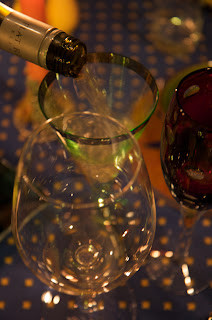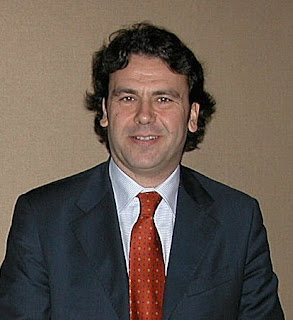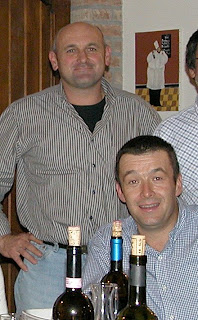I have been watching the wine industry evolved into a position of a global giant thanks, in part, to several wine journals and wine critics who emerged in the late 80's and helped change the perception of wine as a snob drink to one that has become a regular choice beverage for many. The rapid and continuing growth of the North American wine market also created the need for wine reviews and quality ratings, turning some into very influential publications and star personalities - giving truth to the words "The medium is the message" as written by the famous Canadian, Marshall McLuhan.
As in any industry, there is always danger when wine reviews and critics become a source of influence rather than a guide that they once were. This leads me to the very issue as indicated by the title of this blog. Many colleagues will agree with me that the style of several wines being made these days no longer express the true character of the regions where they come from. It becomes obvious when you start speaking to winemakers who justify their new style due to a change in customer preference as indicated by higher demand for wines made popular by certain critics.
This happened to me in Bordeaux where I tasted a selection from a group of winemakers in St. Emilion. As many of us are familiar with the style of this region - elegant, nicely perfumed and velvety.., I just could not believe what my palate was assaulted with: aggressive tannins, lots of oak and massive extraction - none of the elegance and finesse I was expecting. I actually thought that they were trying to fool me by pouring some Pauillac wines! Then I asked a simple, but vital question: Why the change? Answer: Parker!
Let's look at the market since the 90s. Wine consumers are a finicky bunch,
 and while many are dependent upon wine reviews and recommendations from various journals, they also follow a collective trend in a particular market. A good example is the ABC (Anything But Chardonnay) trend in response to the Chardonnay craze in the 90s. This was followed by another equally important trend: Unoaked wines (typically applied to white wines than red). Suddenly, consumers became confident enough to make their own choices, and some in the industry listened. These developments came at a time when there was an explosion of new wines flooding the North American markets.
and while many are dependent upon wine reviews and recommendations from various journals, they also follow a collective trend in a particular market. A good example is the ABC (Anything But Chardonnay) trend in response to the Chardonnay craze in the 90s. This was followed by another equally important trend: Unoaked wines (typically applied to white wines than red). Suddenly, consumers became confident enough to make their own choices, and some in the industry listened. These developments came at a time when there was an explosion of new wines flooding the North American markets.Yet, here we are in the 21st century. Every time I taste wines from producers who are eager to enter a new market, nearly half of the wines are over extracted and lacking in distinguishable character of a varietal or region. Very often, they try to create wines that follow a particular style in keeping with what they perceive as the new trend in wine. Thus, wines that would have tasted according to their classic flavours now offer distinctly varied taste profiles that, in many cases, are so far from their original taste. Sadly, many producers are guilty of this crime, and they come from every wine region you can think of.
Thankfully, there are still a great number of winemakers who are truly dedicated and passionate about their work. They understand that each wine reflects the character of the terroir where their vines grow. In the end, that's how wine making should be followed, and not because of some powerful critic whose idea of a good wine is one that Dr. Frankenstein would also prefer.











